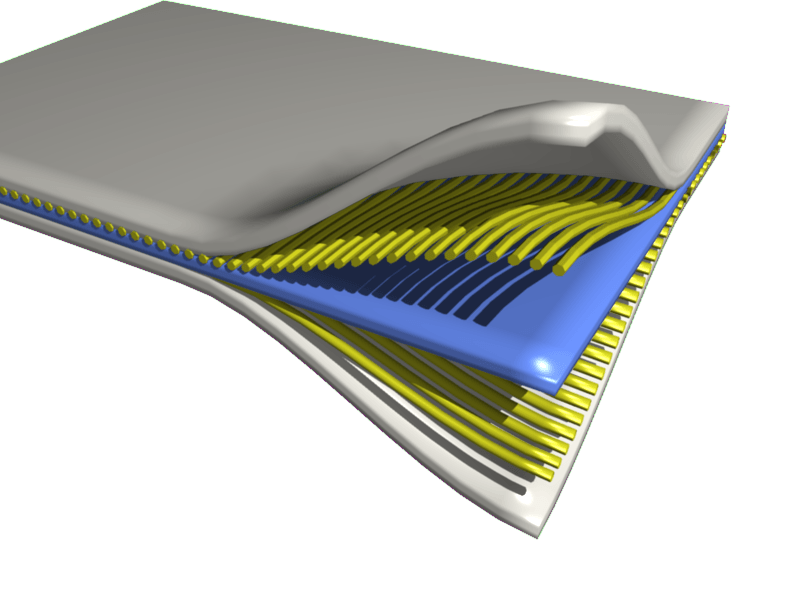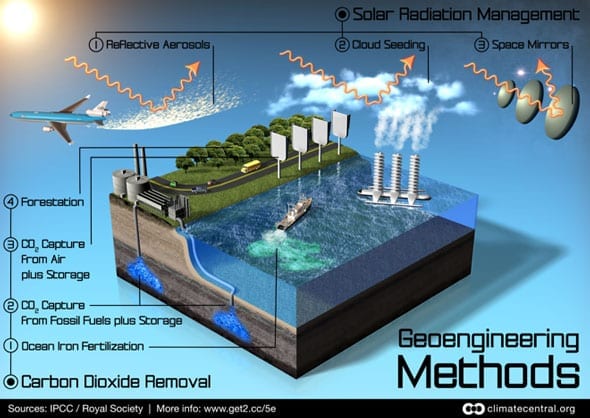
UCL scientists have shown how advanced computer simulations can be used to design new composite materials.
Nanocomposites, which are widely used in industry, are revolutionary materials in which microscopic particles are dispersed through plastics. But their development until now has been largely by trial and error.
The ‘virtual lab’ developed using supercomputer simulations greatly improves scientists’ understanding of how composite materials are built on a molecular level. They allow the properties of a new material to be predicted based simply on its structure and the way it is manufactured, which the team behind the project say is a holy grail of materials science.
“Developing composite materials has been a bit of a trial-and-error process until now,” says Dr James Suter (UCL Chemistry), the first author of the study. “It typically involves grinding and mixing the ingredients and hoping for the best. Of course we test the properties of the resulting materials, but our understanding of how they are structured and why they have the properties they have, is quite limited. Our work means we can now predict how a new nanocomposite will perform, based only on their chemical composition and processing conditions.”
The team led by Professor Peter Coveney and based at the UCL Centre for Computational Science, looked at a specific type of composite material, where particles of the clay called montmorillonite are mixed with a synthetic polymer. It is impossible to study these with microscopes – the processes are smaller than the wavelength of light, and therefore can’t be observed directly. Moreover, the structure of the clay particles makes them tricky to study through less direct methods. The clay particles resemble stacked packs of playing cards, made up of tightly packed sheets (the cards) that may separate out and sometimes cleave off entirely as the long chain-like polymer molecules slide between them. This means much of the interaction between the polymer and the clay is hidden from view.
“Our study developed computer simulations that describe precisely how the layered particles and the polymer chains interact,” says co-author Dr Derek Groen (UCL Chemistry). “The challenge is getting enough precision without the computer simulation being unmanageable. Certain processes need a highly detailed simulation which describes everything on a quantum level – but if we simulated the entire sample at that level, we’d literally need several decades of supercomputer time.”
The Latest on: Supercomputer virtual lab
[google_news title=”” keyword=”Supercomputer virtual lab” num_posts=”10″ blurb_length=”0″ show_thumb=”left”]
via Google News
The Latest on: Supercomputer virtual lab
- Rise of eSports in Houston creates new career paths for digital media studentson April 27, 2024 at 3:19 pm
The rise of eSports has opened up new career opportunities for digital media students, with institutions like the University of Houston offering tailored programs to meet industry demands.
- Meta's Metaverse losses, Google's growth, TikTok's fight, and Oracle's move: Tech news roundupon April 27, 2024 at 6:00 am
President Joe Biden signed the TikTok bill into law, officially starting the 270-day clock for TikTok’s owner, China-based Bytedance, to sell the social media app or face a ban in American app stores.
- xAI, Elon Musk’s OpenAI rival, is closing on $6B in funding and X, his social network, is already one of its shareholderson April 26, 2024 at 10:43 am
Jared Birchall, who heads Musk's family office, was telling prospective investors that xAI was raising $3 billion at a $15 billion pre-money valuation. Sequoia Capital and Future Ventures, the venture ...
- Study demonstrates efficacy of web programming course for incarcerated individualson April 25, 2024 at 12:42 pm
Several years ago, a team of scientists from MIT and the University of Massachusetts at Lowell designed and deployed a first-of-its-kind web programming course for incarcerated individuals across ...
- Movement Labs raises $38 million to build layer-2 blockchain on Ethereum with Facebook techon April 25, 2024 at 7:45 am
Polychain led the Series A funding round, which included participation from Hack VC, dao5, and Robot Ventures.
- Brave behind bars: MIT program empowers inmates with computer skillson April 25, 2024 at 1:20 am
MIT CSAIL's program offers inmates a chance to learn new skills, build self-esteem, and prepare for a life beyond prison.
- Peeking Inside Protons: Supercomputers Reveal Quark Secretson April 23, 2024 at 11:09 pm
Nuclear theorists developed a high-resolution map of quark distributions within protons, distinguishing the roles of up and down quarks in proton properties using advanced computational models. A ...
- OpenAI winds down AI image generator that blew minds and forged friendships in 2022on April 18, 2024 at 4:00 am
The launch began an innovative and tumultuous period in AI history, marked by a sense of wonder and a polarizing ethical debate that reverberates in the AI space to this day. Last week, OpenAI turned ...
- New Mexico Laboratory Unveils Supercomputer to Advance AIon April 16, 2024 at 8:03 am
Los Alamos National Laboratory has unveiled its newest supercomputer, which officials say will accelerate how they integrate artificial intelligence into both national security work and scientific ...
- Los Alamos fires up 10 exaFLOPS AI supercomputer, Venado, powered by Nvidiaon April 16, 2024 at 3:20 am
Interestingly, Venado incorporates NVIDIA Grace Hopper Superchips. These chips are a powerful combination of an Arm-based NVIDIA central processing unit and an NVIDIA Hopper architecture-based ...
via Bing News










